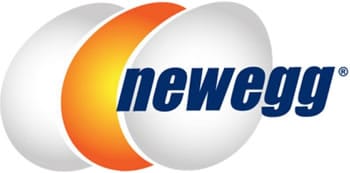Selling through just one channel is always risky. But, when that channel is Amazon, it can be a very dangerous plan. Competition on Amazon is always intense and even borders on the downright dirty, with sellers frequently being brought down.
The threat doesn’t just come from rogue competitors, as seller performance or product quality issues can very easily lead to suspension. And, the longer that your ASIN is blocked, or your listing is suspended, the more money you lose.
Now, there is no way to guarantee that you’ll never be suspended but having a multi-channel strategy can cushion the blow. It means that if you aren’t able to sell on Amazon, you still have sales coming in from other sales channels. The more marketplaces you add, the easier it will be to sustain your business until you’re back on Amazon.
So, in this post, we will look at some Amazon alternatives. They all have similar features to Amazon, for example being catalog-based, and have the potential to be a key part of your multi-channel approach.
Also check out our guide to eBay alternatives.
At a glance
| Marketplace | Operates In | Product Categories | Sales Commission |
|---|---|---|---|
| US | All | 6% -20% | |
| Everywhere | Computer parts, electronics, gaming, appliances and tech. | 8% -14% | |
| Everywhere | All | 15% of the sales price excluding VAT | |
| UK | All | 5% -9% |
Amazon alternatives
When we talk about marketplaces that have similar characteristics to Amazon, what do we mean? Well, they should be generalist marketplaces, where sellers can offer products in a range of different categories. They should also be catalog-based. This is where there is just one listing for each unique product, and all sellers do is set their price and the quantity they have available.
Another key feature of Amazon is the Buy Box. So, alternatives must have their own version, which automatically chooses the offer it judges to be best and presents it to buyers. Other sellers offering the same product may be displayed elsewhere on the product description page.
Amazon’s ethos is also worth considering, as the majority of Amazon sellers are highly organized and professional, due to years of adhering to strict rules. This means that they are more likely to meet the tough entry criteria that some of these marketplaces have.
Asides from the look and feel of the marketplace, Fulfillment By Amazon (FBA) is a big attraction for sellers because it means they don’t have to worry about shipping orders. While it is not a prerequisite for an Amazon alternative to have a logistics arm, it’s certainly a desirable feature for sellers who are used to FBA.
Walmart

Operates in: US
Alternatives to eBay and Amazon are often criticized for a lack of traffic. This isn’t an issue that Walmart has, as their site receives 110 million unique visitors every month. And, that figure is growing. It is now the second largest shopping website in the US.
While this might seem a mouthwatering prospect, sellers have to apply to sell on Walmart and there’s no guarantee of acceptance. They only want the best sellers, and it can often take several weeks for application to be reviewed.
Like Amazon, Walmart is a retailer, so if you are accepted to sell on their marketplace, they may also be competing against you. This doesn’t stop people selling on Amazon though, and shouldn’t stop you applying to sell on Walmart either.
Walmart don’t charge listing fees but do charge a category-specific referral fee of between 6% and 20% when an item sells.
Walmart’s marketplace was rebooted recently and still not much is known about what it’s like to sell there. Find out more about selling on Walmart.com.
Newegg

Operates in: Everywhere
Another option is Newegg, a retailer and marketplace best-known for electronics, gaming equipment, computer parts and laptops. Sellers have to be accepted to sell on Newegg, and can apply via their website. It is a catalog-based marketplace, and listings feature a Buy Box-style option, as well as showcasing other top sellers.
One really attractive feature that Newegg offers is its own fulfillment service, called Shipped by Newegg (SBN). It works in a similar way to FBA. You send your stock to one of Newegg’s five US-based fulfillment centers and they store it for you. Then, when you receive an order, they pick, pack and ship it.
SBN can also be used to fulfill orders from other channels. However, they will only handle the customer service for orders made through Newegg. Listings that use SBN get a similar boost to Prime listings on Amazon, and are featured prominently on the site.
Newegg doesn’t charge listing fees, and sales commission is category dependent, ranging from 8% to 14%. Newegg sellers get paid weekly.
Fruugo

Operates in: Everywhere
Fruugo is an interesting marketplace, combining features of both Amazon and eBay. Each sellers submits their own listing with a title, description and images. However, the product pages allow no seller-specific branding, and do not even give the name of the seller offering the product. Consumers could actually miss that it is a marketplace, and think that they are buying directly from Fruugo.
It’s very much a business-to-consumer feel, so we have decided to include Fruugo as an Amazon alternative.
A big advantage to Fruugo is that it offers easy international expansion. You just need to upload your products, and set the price in your own currency. Fruugo will then translate the listing and make your product available on all 23 of its global marketplaces. They will also handle customer service, but you are responsible for shipping the product overseas.
Fruugo doesn’t charge sellers to list products. Instead, they take a commission of 15% of the sales price excluding VAT.
OnBuy

Operates in: UK
UK-based marketplace, OnBuy, calls itself “the direct Amazon alternative” so it’s no surprise that they are very similar in design. Just like Amazon, there is one single listing for each unique product. The product detail page also resembles Amazon, featuring OnBuy’s very own Buy Box. Offers from other sellers can be found at the bottom of the page.
Alongside a category-specific sale fee of between 5% and 9%, OnBuy sellers have to pay a monthly subscription. There’s the Standard plan at £19 per month and the Partner plan at £39 per month.
OnBuy say that the Partner plan boosts sellers in the same way that Prime does on Amazon, giving them priority in the Buy Box. OnBuy also chooses a selection of sellers with Partner plans to appear on the main category pages.
In Closing
In the current climate Amazon is an integral part of any ecommerce strategy. When things are going your way it’s unbeatable. Your products have great visibility, they’re selling well, the logistics are taken care of, and your business is heading in the right direction.
The waters can become choppy though. So while very few of these marketplaces really rival Amazon, they can provide nice supplementary sales, help you to reach new customers and build a business away from Amazon.
In time, that can be enough to make your business sustainable, even if the worst happens.
This article was first published in April 2018, and last updated in August 2020.
Great article Alex! Very useful for planning out a multi-channel strategy. I would also like to share an infographic showing the pros and cons of Jet, Walmart and Overstock. Hope it helps!
https://blog.jazva.com/swot-marketplace-amazon-ebay-jet-walmart-overstock